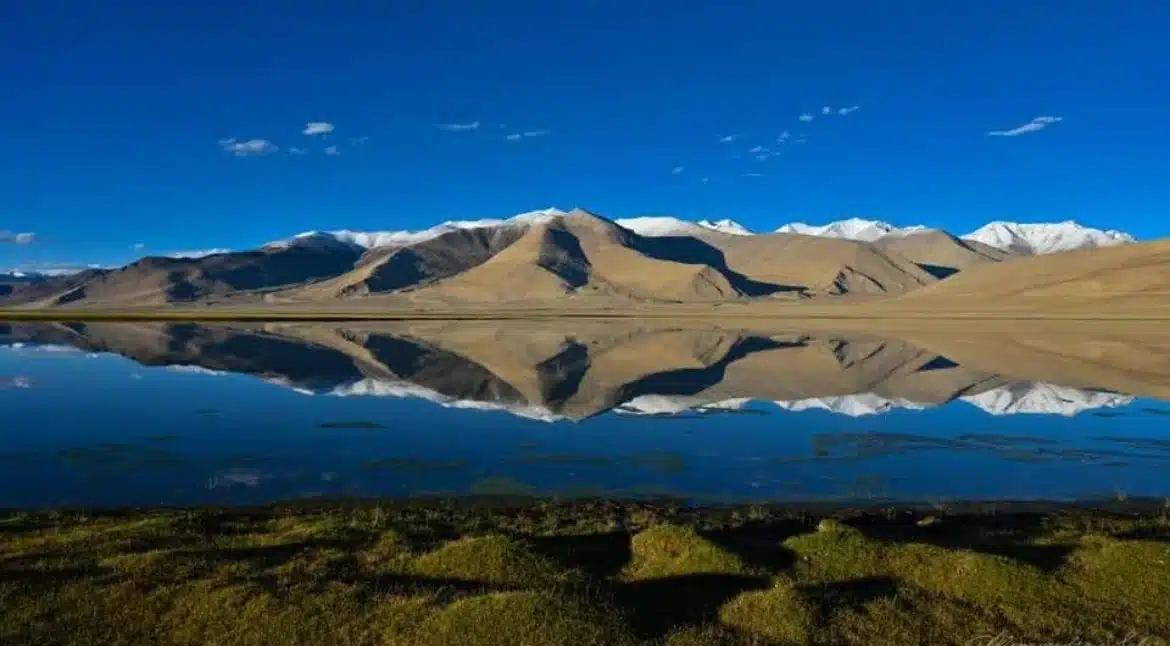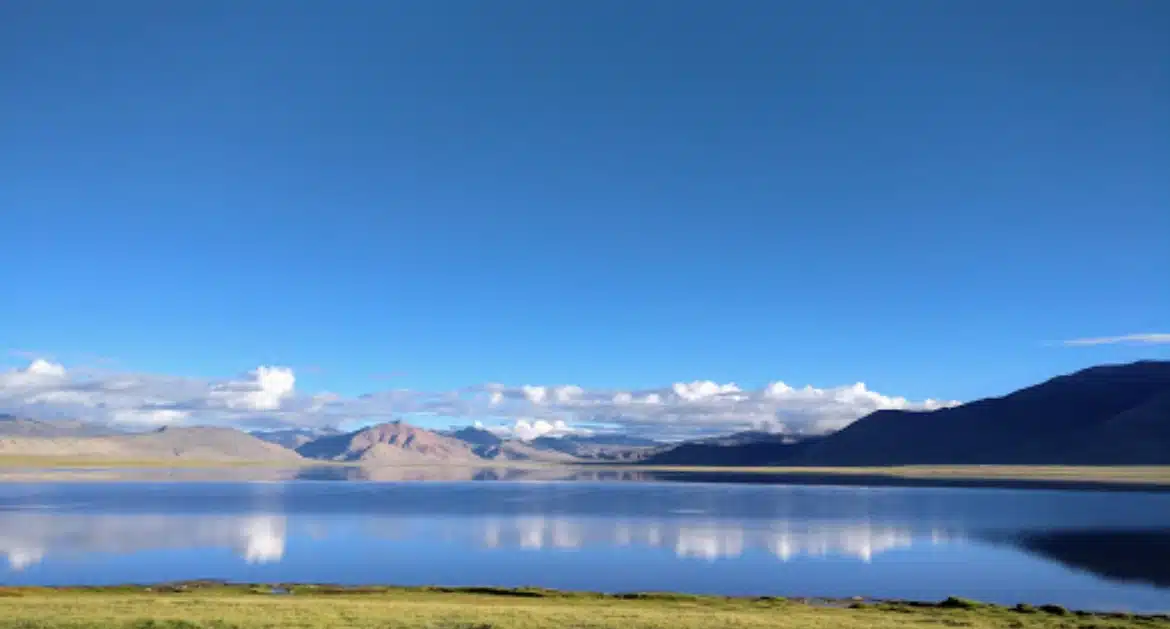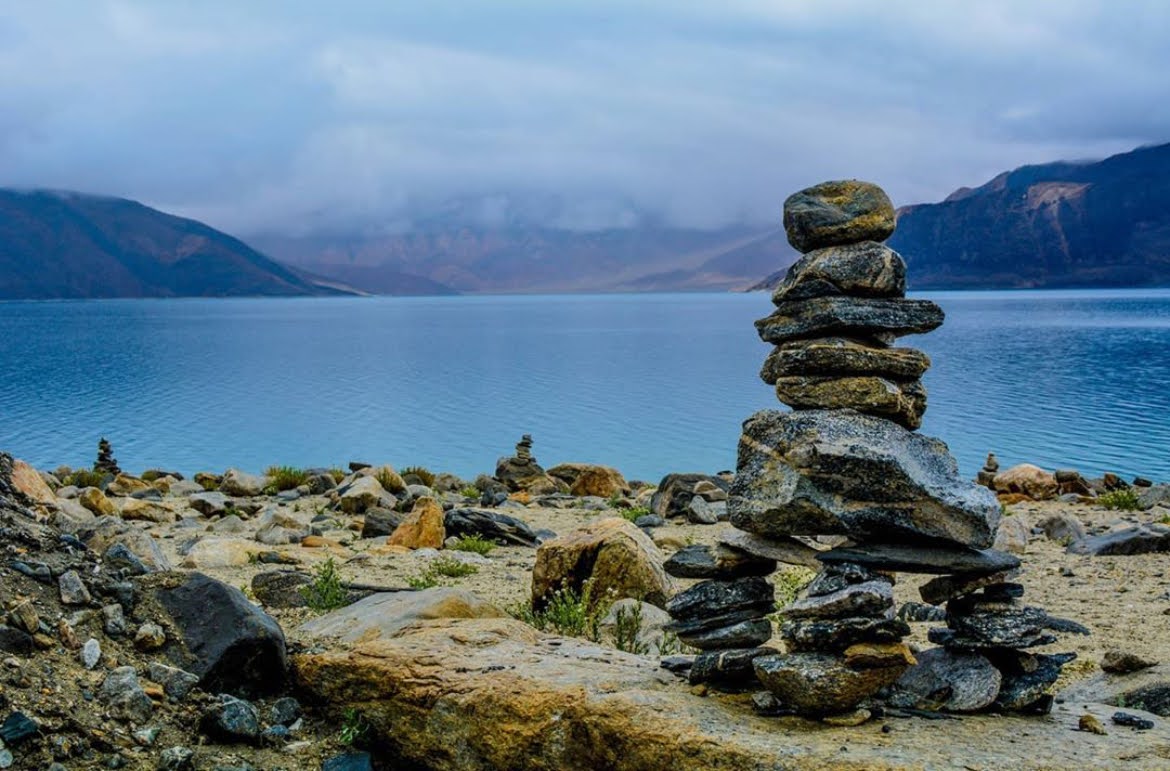Are you searching on the Internet for Startsapuk Tso because you want to learn more about this stunning lake in Ladakh? If yes, you are at the right place. I will provide you with authentic, detailed information that you need to know before visiting this beautiful lake in Ladakh.
Startsapuk Tso, located amidst the majestic landscapes of Ladakh, is a hidden gem waiting to be explored. Located in the tranquil valleys of the region, this lake offers a serene retreat away from the hustle and bustle of everyday life. With its crystal-clear waters and breathtaking surroundings, this lake promises an unforgettable experience for travelers seeking tranquility amidst nature’s beauty.
Jullay, I’m RøÕsh KB, I live in Ladakh, and I’ve had the privilege of exploring the natural wonders of this region. Through my firsthand experiences and knowledge, I aim to provide you with all the insights you need to make your visit to Startsapuk Tso truly memorable.
Startsapuk Tso Location
Startsapuk Tso Lake is situated in the mesmerizing landscapes of the Indian Union Territory of Ladakh, surrounded by snow-capped mountains and lush valleys. Located approximately 158 km from Leh, this lake is a haven of tranquility amidst the rugged terrain of the Himalayas.
Tso Kar Lake is just near to this beautiful lake. The pristine beauty of this lake is enhanced by its remote location, making it an ideal destination for those seeking solace in nature’s Beauty.
Startsapuk Tso Altitude/Height
The elevation of this lake at an altitude of 4511 meters (14799.87 feet) above sea level, Startsapuk Tso is one of the region’s highest lakes. Its lofty elevation offers visitors breathtaking panoramic views of the surrounding mountains and valleys. The cool mountain air and pristine waters create a serene atmosphere, inviting travelers to immerse themselves in the tranquility of their surroundings.
Startsapuk Tso Oxygen Level
Due to its high altitude, Startsapuk Tso experiences lower oxygen levels compared to the sea level. At such elevations, the air is thinner, containing fewer oxygen molecules per breath. As a result, visitors may experience symptoms of altitude sickness, such as headaches, dizziness, and nausea. Proper acclimatization is essential before venturing to this altitude to mitigate the risk of altitude-related illnesses.
Visitors must allow their bodies time to adjust gradually to the reduced oxygen levels by spending a few days at lower altitudes before ascending to Startsapuk Tso. Additionally, staying hydrated, avoiding strenuous physical activity, and getting plenty of rest can help alleviate symptoms and aid in acclimatization.
The oxygen level at Startsapuk Tso is approximately 57%, significantly lower than that at sea level. This necessitates caution and proper preparation for those planning to visit, especially individuals who are not accustomed to high-altitude environments. Visitors should consult with a healthcare professional before their trip and consider carrying medications such as acetazolamide to prevent or alleviate altitude sickness symptoms.
Startsapuk Tso Temperature
Startsapuk Tso experiences a wide range of temperatures throughout the year. Winters bring freezing temperatures, transforming the landscape into a winter wonderland. In contrast, summers are mild and pleasant, with temperatures ranging from 10°C to 22°C. The summer months offer the perfect opportunity to explore the beauty of Startsapuk Tso Lake and its surroundings.
Why Startsapuk Tso is Famous For
Startsapuk Tso is renowned for its pristine beauty and serene atmosphere. Nestled amidst the Himalayan mountains, this lake offers a peaceful retreat away from the chaos of urban life. Its crystal-clear waters reflect the surrounding landscapes, creating a picture-perfect setting that mesmerizes all who visit.
Moreover, Startsapuk Tso is a haven for wildlife enthusiasts and birdwatchers. The lake and its surrounding areas are home to a diverse range of flora and fauna, including migratory bird species and rare wildlife.
Visitors can spot a variety of bird species, including ar-headed geese, black-tailed godvit, Black-necked cranes, and Tibetan sandgrouse, and may even catch a glimpse of elusive wildlife such as wild ass, Tibetan wolf, wild yak, bharal, brown bear, and the marmot.
How to Reach Startsapuk Tso
Reaching Startsapuk Tso is an adventure in itself, offering travelers the opportunity to traverse through the breathtaking landscapes of Ladakh. Depending on your starting point, there are different routes you can take to reach this serene lake nestled amidst the majestic mountains.
- From Leh:
Starting from Leh, head southeast towards Karu and then continue on the Leh-Manali Highway (NH3). Follow the highway through mountain passes like Tanglang La Pass until you reach Startsapuk Tso. The journey takes approximately 4 hours, depending on road conditions and stops. - From Manali:
If you’re coming from Manali, head north towards Keylong and continue on the Leh-Manali Highway (NH3). This route includes the world-famous Atal tunnel and offers breathtaking views. The journey from Manali to Startsapuk Tso is an adventure, with plenty of scenic stops along the way.
Both routes promise an unforgettable journey through the Himalayas, with stunning landscapes and awe-inspiring vistas at every turn. Whether you’re driving from Leh or Manali, reaching this lake is sure to be a highlight of your Ladakh experience.
Best Time to Visit Startsapuk Tso
The best time to visit Startsapuk Tso is from June to September when the weather is mild and pleasant. During this time, visitors can enjoy clear skies, comfortable temperatures, and stunning views of the surrounding landscapes. However, it’s essential to be prepared for temperature fluctuations, especially during the evenings and nights.
Things to Do in Startsapuk Tso Lake
Startsapuk Tso offers a range of activities for visitors to enjoy amidst its natural beauty. Some of the things you can do at Startsapuk Tso include:
- Boating: Explore the tranquil waters of Startsapuk Tso by boat and soak in the serene atmosphere of the lake.
- Trekking: Go on a scenic hike around the lake and discover hidden trails that offer breathtaking views of the surrounding mountains.
- Birdwatching: Spot a variety of bird species, including black-tailed godvit, Black-necked cranes, and Tibetan sandgrouse, and marvel at their natural habitats.
- Photography: Capture the stunning landscapes and vibrant wildlife of Startsapuk Tso through your lens and create lasting memories of your visit.
- Relaxation: Unwind amidst nature’s tranquility and let the peaceful surroundings of the lake rejuvenate your mind and body.
Nearby Attractions of Startsapuk Tso Lake
In addition to Startsapuk Tso, the region is home to several other attractions worth exploring. From ancient monasteries to picturesque valleys and lakes, there’s no shortage of places to discover in the vicinity of this lake. Here are some of the nearby attractions of this lake.
- Tso Kar
- Puga valley
- Tanglang La Pass
- Tso Moriri
- Kyagar Tso
Things to Carry When Visiting Startsapuk Tso Lake
When visiting Startsapuk Tso, it’s essential to be prepared for the high-altitude environment. Some essential items to carry include:
- Warm Clothing: Layered clothing to stay warm in chilly temperatures.
- Sunscreen: Protect your skin from the sun’s harsh rays, especially at high altitudes.
- Sunglasses: Shield your eyes from the glare of the sun and snow.
- Water Bottle: Stay hydrated at high altitudes to prevent altitude sickness.
- First-Aid Kit: Carry basic medical supplies for emergencies.
- Camera: Capture the stunning landscapes and wildlife of the lake.
- Snacks: Pack energy-boosting snacks for treks and outdoor activities.
- Power Banks: To charge your electronic devices
FAQ
Which lake India is called White lake?
Tso Kar is called the “White Lake” due to the salt deposits along its shores, which create a distinctive white appearance. Additionally, during winter, the frozen surface adds to its whitish charm, making it a unique feature of the landscape in Ladakh.
Which lake is the cleanest lake in India?
The cleanest lake in India is arguably Kareri Lake in Himachal Pradesh, known for its pristine surroundings. As for the smallest lake in India, there isn’t a clear answer due to the abundance of small lakes and ponds across the country.
Which Indian lake is occupied by China?
Pangong Tso, a beautiful high-altitude lake located in the Ladakh region of India, is partially occupied by China. And Spanggur Tso is fully occupied by China,
Conclusion
In this blog, I’ve tried to provide information about Startsapuk Tso Lake, including its location, attractions, activities, and essential tips for visitors. Whether you’re seeking tranquility amidst nature’s beauty or adventure in the rugged landscapes of Ladakh, It offers an unforgettable experience for all. I hope this blog proves valuable in planning your visit to Startsapuk Tso and exploring the wonders of Ladakh’s natural landscapes.
If you have any further questions or feedback, please feel free to reach out. Thank you so much for reading this blog, and I wish you a memorable journey amidst the breathtaking landscapes of Ladakh.
Jullay!
Similar experiences: Top 10 Beautiful Lakes In Ladakh You Must Explore




